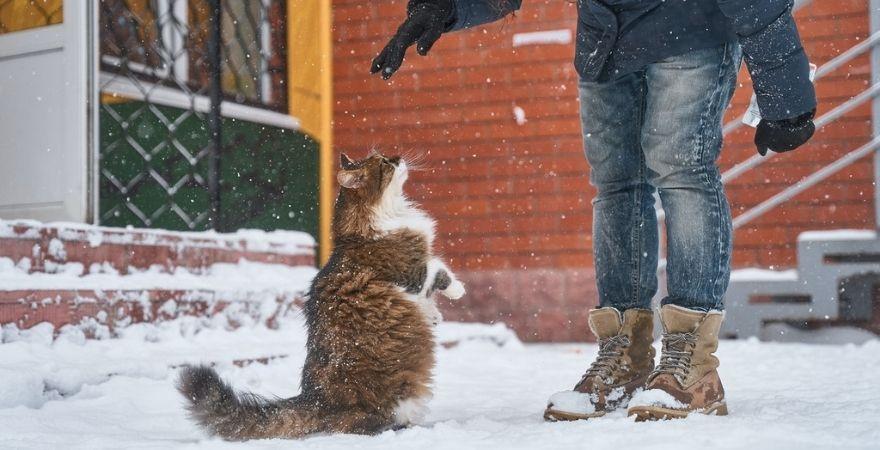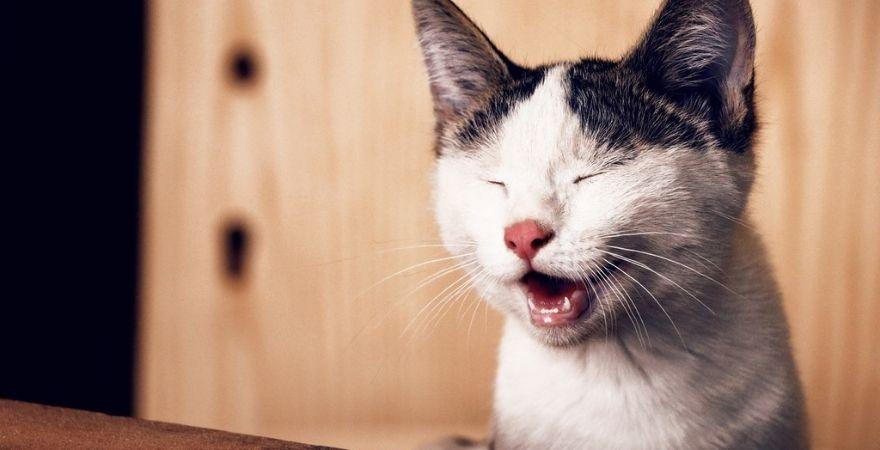
Cats & constipation

Stephanie Pollard
A dedicated pet lover and writer who’s always interested in the ‘learning as you go,’ during the writing process. For example, during quarantine she learned that ASMR videos of people restoring shoes can be very relaxing (a lot of time has been spent on YouTube), and that she likes her fiance enough to live with him during a global pandemic.
As your kitty’s beloved pet parent, you know how... 'particular' they can be when it comes to going to the bathroom.
After finding the perfect spot for their litter box, and double-checking their horoscope to make sure the stars are aligned, your cat should be able to make the drop with no problems. But if you’re noticing that you don’t have to check on their litter oasis as often, something might be up
Constipation happens a lot in cats because they’re so prone to dehydration (they’re pretty bad at drinking water - no seriously, look it up on YouTube). Normally cats go number 2 every 24 to 36 hours, and constipation usually passes on its own. But if it’s been longer than 72 hours since they’ve visited their litter loo, you may need to look into why kitty is having a case of the no-poos.
Before we get into reasons behind your cat’s poo troubles, it helps to know what a healthy bowel movement does look like - in case you’re new to poop inspection. A healthy cat stool is normally deep brown in colour, with a firm but not mushy texture (test that however you can), and a smell that’s present but not overpowering. Pet parenting is not for the squeamish stomach!

Now that you’ve spent more time examining your cat’s poop than your own (you do check your stuff on the regular too, right?), and you noticed very hard, dry stools in or around the litter box - or nothing at all after multiple trips - your cat is constipated.
If constipation is normal, what’s the big deal?
Nobody likes that ‘plugged up’ feeling, and unchecked constipation could mean big trouble. Kidney disease, hyperthyroidism, diabetes, and some types of cancer could be more serious diseases causing symptoms like constipation, so you’ll need to pay close attention to those BMs to see if a visit to the vet might be in order.
But let’s not start the ‘Get Kitty in the Cat Carrier’ process without trying a few things first (we feel that relief sigh too man, we feel it too):

Water, Water, WATER: Getting your I-don’t-like-water-cat to drink water regularly won’t be easy, so you may need to sweeten that pot by getting them more wet food. Your pet food budget might blow up but wet food has water, and that will definitely help your cat’s digestive system, which will help stools pass smoothly.
Some other things you can try is putting water bowls in different areas of your place, building a pet water fountain, or flavoring water with a bit of clam juice, beef broth, or tuna juice - just like Crystal Lite except for cats! But make sure you leave a source of plain water too, in case they don’t like the flavor.
Something New: Turns out food sensitivity also causes tummy trouble in cats, including constipation. A mainly dry food diet tends to be the main suspect (remember — constipation comes from a lack of water, which cats don’t like/are bad at drinking), but an ingredient that doesn’t sit well could also jam the system. Try switching out kitty’s food for something new, but do it slowly. Mix a bit of the new food into their current food over 8 - 12 weeks, until their system adjusts to the new food and they can eat it exclusively.
R&R: You probably know this but cats stress out easily, which also causes constipation. Switching up your schedule, moving to a new place, and sudden loud noises can cause performance anxiety, so giving your furry one time to adjust is necessary. Calming pheromones and supplements also helps kitty relax - perfect for some loo time.
Get Moving: We get it - most fitness plans went out the window after week 2 of quarantine, but exercise for cats helps their intestines move things along! Use those Amazon fingers to order some cat toys and activities you both can get in on to get moving, so that one of you can start going in the litter box again
Fiber Power: A good ole dose of fiber a day keeps your cat going, so supplements that have psyllium husks and wheat bran are always a big help. *cough*Shameless plug: Our Scruffy Paws Hairball Be Gone chews contain psyllium, which helps intestine function *cough* 👀😻
Outside the Box: Sometimes, it’s the box keeping everything in that’s the problem. Ideally you should have one more box than you do cats, and those boxes are in different areas of your place. Also the type of litter might not be working for them, so you may have to experiment with that as well. Whoever said ‘beggars can’t be choosers’ obviously did not have a cat
Constipation sucks, and there could be lots of reasons why your cat is having a hard time going (if at all). Give these tips a try and let us know in the comments how you made out - or if you have a new tip you wanna share! Also, *cough* reviews are appreciated if you used our stuff *cough cough.* 👀👀
Good Luck!




2 comments
My cat (15)has had stones several times leading to surgery.. now the vet says she has early thyroid issues. I give her u t wellness chews and the thyroid soothe drops along with Hills cd canned food and baby food (meats)but still seems she should have bm more often (every 3-5 days). Could I give her hairball chews along with all the other products and not create any more problems for her ..
I use 1/4 tsp. of miralax mixed in with her wet food which I give only in evening to my 15# cat. works great :-)